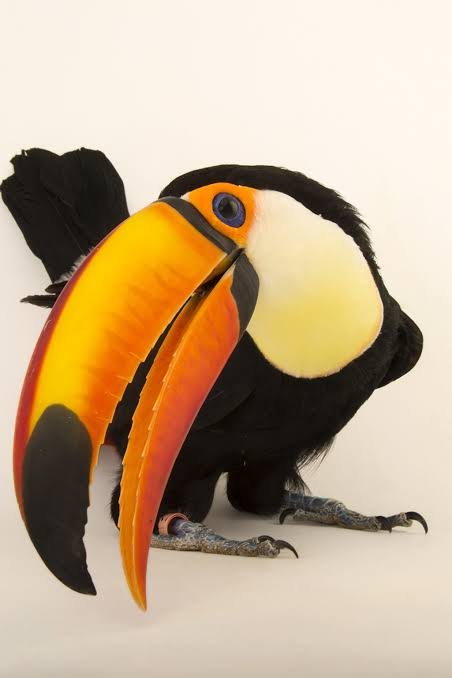Toucans are one of the most captivating and unique bird species in the world. These birds, with their striking appearance and vibrant plumage, have a special place in the hearts of bird enthusiasts and nature lovers alike.
Toucans are medium-sized birds belonging to the family Ramphastidae. They are best known for their large and distinctive bills, which vary in size and shape among the different toucan species. These bills, while visually striking, serve several important functions. The bills can have an array of colors, from fiery reds to deep blues. While they are visually stunning, these bills are incredibly lightweight due to their foam-like structure. The size and vivid hues of their bills play a significant role in toucan communication and mate selection.
Toucan Species:
There are about 40 different species of toucans, each with its unique characteristics. Some of the most well-known species include the Keel-billed Toucan, Channel-billed Toucan, and the iconic Toco Toucan. These birds can be found in various regions of the Americas, from Mexico to South America.
Toucan Behavior:
Toucans are social birds that often travel in small groups, adding to their charm and making them a joy to watch. Their behavior is a delightful mix of playfulness and curiosity. Here are some fascinating insights into toucan behavior:
1. Feeding Habits:
Toucans are primarily fruit eaters, although they also consume insects, small reptiles, and the occasional bird eggs. They are essential for forest ecosystems as they help disperse seeds, contributing to the regeneration of the forest.
2. Vocalization:
Toucans are not the most melodious of birds, but their calls are distinctive and carry over long distances. Their vocalizations include croaks, yelps, and clacking sounds, often used to communicate within their social groups.
3. Nesting Habits:
Toucans nest in tree cavities, often taking advantage of abandoned woodpecker holes. Their nests are cozy and well-protected, providing a safe environment for their young. They typically lay two to four eggs at a time.
Toucan Habitat:
Toucans are most commonly found in tropical and subtropical forests of Central and South America. They thrive in lush, rainforest environments where a variety of fruits and insects are readily available. These forests provide the perfect habitat for these colorful birds to display their vibrant plumage.
Some of the amazing facts that make toucans truly exceptional:
1. Colorful Bills:
Toucans' bills are not only for show. They help regulate their body temperature, serving as a thermal radiator. By dilating and constricting blood vessels in their bills, they can efficiently control heat loss.
2. Tongue Tricks:
Toucans have an impressive adaptation – their long, barbed tongues. These agile tongues help them snatch up fruit and insects from hard-to-reach places.
3. Lightweights:
While their bills may look heavy, they are actually incredibly lightweight due to the unique composition of their beaks. This adaptation helps them fly and balance with ease.
4. Limited Flight Abilities:
Toucans are not known for their aerial acrobatics. Their large bills make them somewhat awkward in flight, but they are excellent climbers and hop from branch to branch with grace.
5. Lifespan:
Toucans can have a surprisingly long life in captivity, sometimes living up to 20 years. In the wild, their lifespan is generally shorter due to predation and environmental factors.
6. Important Seed Dispersers:
Toucans play a crucial role in maintaining the health of tropical forests. Their consumption of fruits and subsequent seed dispersal helps regenerate and sustain these vital ecosystems.
7. Mating Displays:
Toucans are known for their playful courtship rituals, including the exchange of fruit and mutual preening. These charming displays help strengthen the pair bond.
Toucans are indeed nature's avian artists, painting the treetops of tropical forests with their vibrant plumage and distinctive bills. Their unique adaptations, social behavior, and essential role in forest ecosystems make them a captivating and crucial part of the natural world. These colorful birds are a testament to the wonders of biodiversity and the endless surprises that the natural world has to offer.
